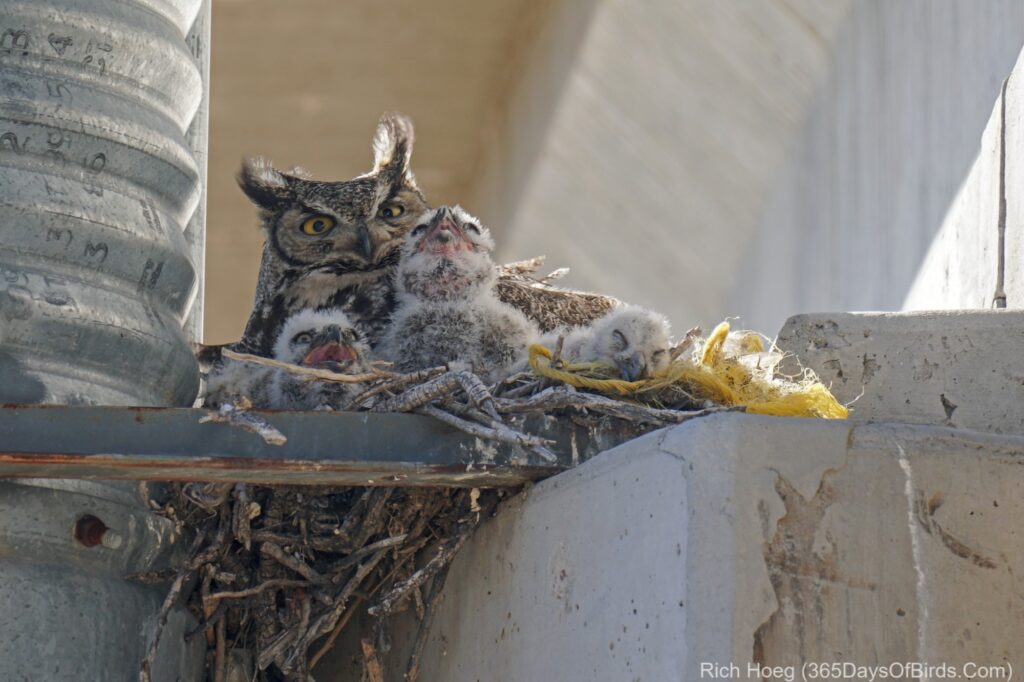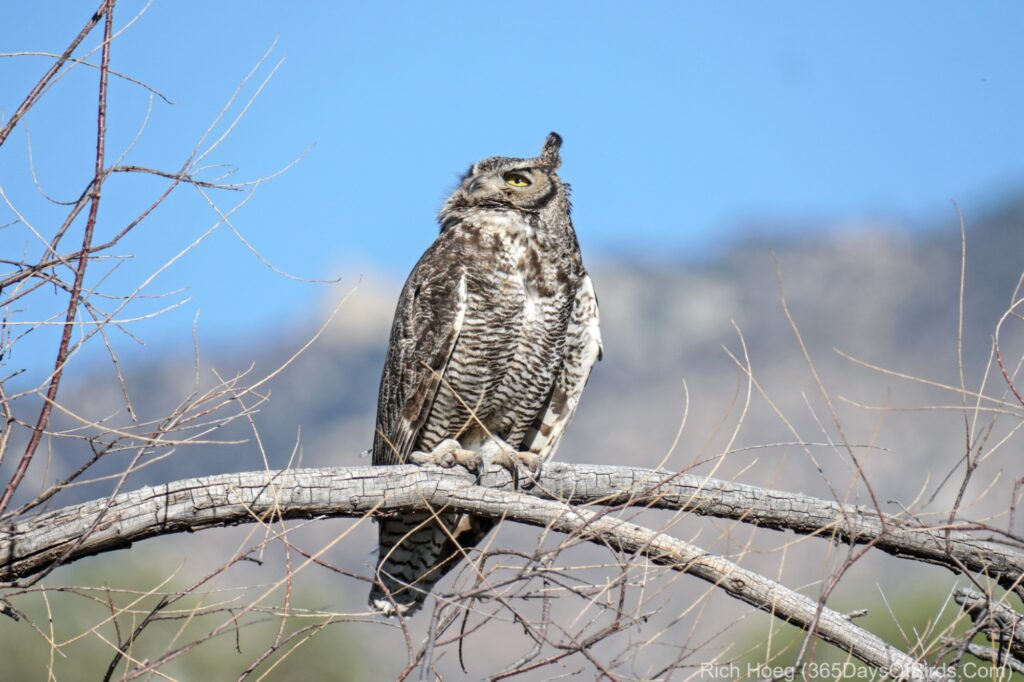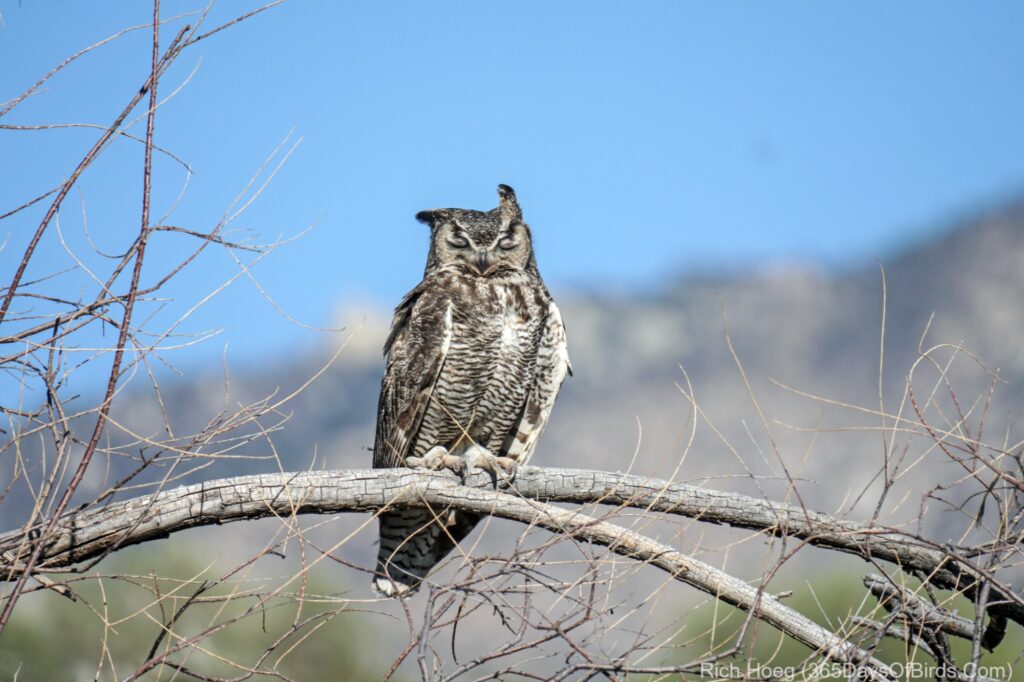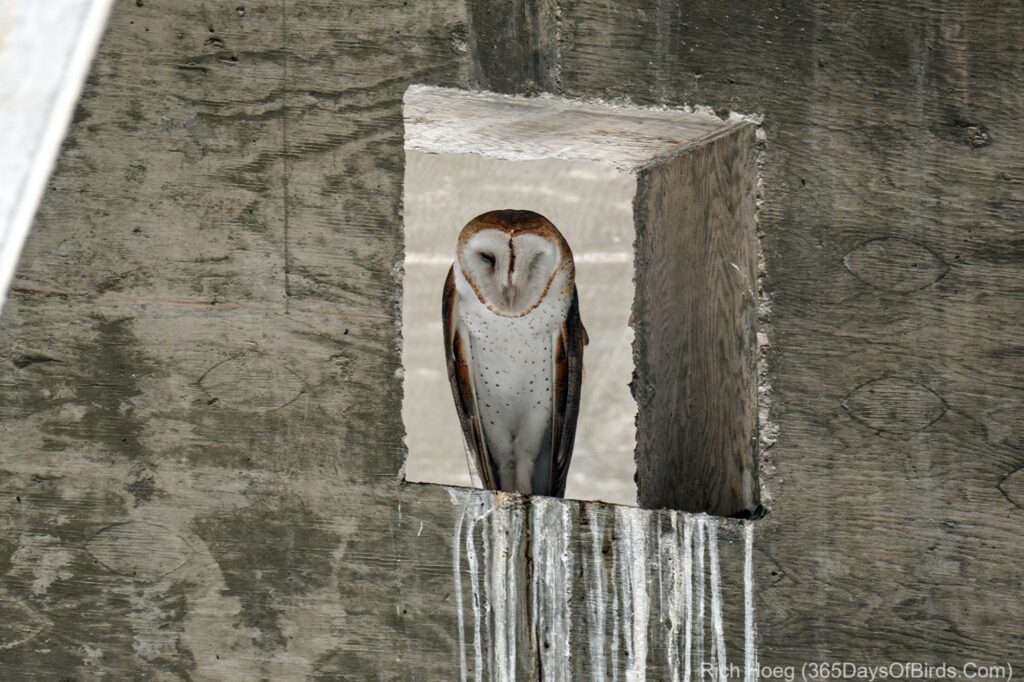I was dumbfounded yesterday afternoon when I found a Barn Owl and a Great Horned Owl Family peacefully coexisting within 30 yards of each other. My experience, and common birding thought has always taught me that Great Horned Owls, which are top of the food chain, will NEVER tolerate other owls or raptors nearby. However, north of Tucson I found just this situation. A family of five Great Horned Owls did not seem to mind the presence of the Barn Owl. I can only speculate that prey must be plentiful, because Dad GHO could have easily attacked and killed the Barn Owl. At home, I have found the remains of several Barred Owls underneath my local owl’s nests over the past four years.
I did some Google searches, and even the Cornell School of Ornithology seems to be in line with my way of thinking, but I did find one birder / naturalist who lives in Utah who experienced the same strange situation a few years back (read his account … with pics)
Mom Great Horned Owl and Family
Finally I have included images of both species chilling out and falling asleep … not the mark of a stressed out bird … the exact opposite. Let me stress that each image in this blog post was taken within a 100 yard radius (a very small area in terms of nesting and perches). I even think there may be a Barn Owl nest in the immediate vicinity, but I did not want to stress the owls out by making a close exhaustive search.





in green space in my neighborhood in southwestern Ohio, I often hear barred owls. Last night I heard a great horned owl, however. Once 15 years ago we spotted a GHO having trouble lifting a rabbit aloft during a winter hunt. More recenlty a family of BO’s used a sycamore knothole to raise 2 owlets and we hard them all that summer in 2015. I will keep an ear out to see if the GHO presence means the BO’s will find other habitats.
Pay particular attention to the hooting in late February. They will tell you where their nest is located!
What a fine discovery!